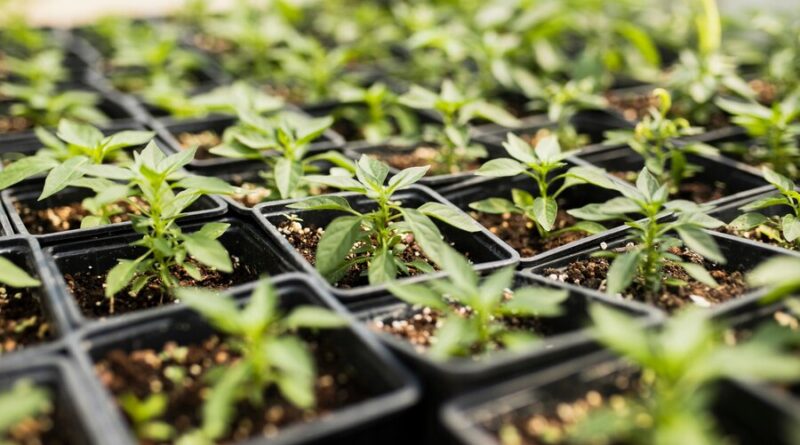Step-by-Step Guide to Starting Seeds in Seedling Trays
Starting seeds in seedling trays is a way to give your plants a head start so they grow strong, healthy, and ready to be transplanted into your garden. This increases your chances of having a more uniform and robust crop. Whether you are a novice gardener or an experienced green thumb, it can significantly improve your chances of success.
Below are the essential steps of preparing and filling trays to ensure optimal growth and development for your seedlings.
- Gather Your Materials
Before you begin, gather all the necessary materials.
What will you need?
- Seedling trays(with or without individual cells)
- Seed starting mix (a light, well-draining soil mix)
- Seeds of your choice
- Labels and a waterproof marker
- A watering can or spray bottle with a fine nozzle
- A clear plastic dome or plastic wrap (optional)
- A heat mat (optional, for temperature control)
- Choose the Right Seed Starting Mix
Use a specialized seed starting mix to provide an ideal environment for the seeds to germinate and develop roots. It should be high-quality, which means it should possess the following characteristics: light, fluffy, well-draining, and sterile. These are important to allow for easy root penetration, prevent waterlogging, and reduce the risk of pests and diseases.
- Prepare the Seed Starting Mix
Before filling the trays, moisten the seed by starting mix by gradually adding water until it is uniformly damp but not waterlogged. The mix should hold together when squeezed without releasing excess water. This ensures that the seeds have the ideal environment for germination and early growth.
- Fill the Seedling Trays
Fill each cell of the trays with moistened seed starting mix. Gently press the soil to eliminate air pockets without compacting it tightly. There should be a small gap at the top to allow for watering. This provides a firm yet breathable environment for seeds to germinate.
- Sow the Seeds
Pay attention to the planting directions provided for each type of seed. Larger seeds can be put deeper, but smaller seeds are usually best sown closer to the surface. Make tiny holes in the soil using a pencil, chopstick, or finger, then plant the seeds there and carefully cover them with soil.
- Label the Trays
It’s important to label your trays so you can remember what you’ve planted and when. Use permanent markers to write directly on the trays or use waterproof labels. Add the date of planting as well as the type of plant. Doing these helps identify which is which and keep track of their progress.
- Water the Seeds
Once the seeds have been sown, lightly water them to help the soil settle and supply the moisture required for germination. To prevent moving the seeds, use a fine-mist watering can or a spray bottle. It is important that the soil is damp at all times but not to the point that it is soggy. While underwatering can cause the seeds to dry out and not germinate, overwatering can result in fungal illnesses.
- Provide Adequate Light
Seedlings need plenty of light for strong growth. Pick a sunny spot that gets 12 to 16 hours of light daily. You can use fluorescent or LED grow lights if natural light is insufficient. Just make sure that you install them 2 to 3 inches above the seedlings and adjust their placement as the seedlings grow.
- Maintain Proper Temperature and Humidity
The ideal temperature for germination is 65–75°F (18–24°C). If you are starting seeds in a cool area, you may want to use a heat mat underneath the trays to help maintain the proper temperature. Consider the humidity as well. To produce a humid climate, cover the trays with plastic wrap or a clear plastic dome. However, do not forget to remove the cover as soon as the seedlings appear for better airflow and reduced risk of diseases.
- Thin the Seedlings
To prevent overcrowding, thinning must be done. It helps ensure that each seedling has enough space to grow. Once you notice the first set of true leaves appear, snip them using a pair of scissors. Start with the weaker ones at the soil level to prevent them from causing root disturbance. Doing this gives the stronger seedlings the best chance to thrive.
By following these 10 steps, any gardener can create an optimal environment for their seeds to germinate and grow into healthy seedlings.

